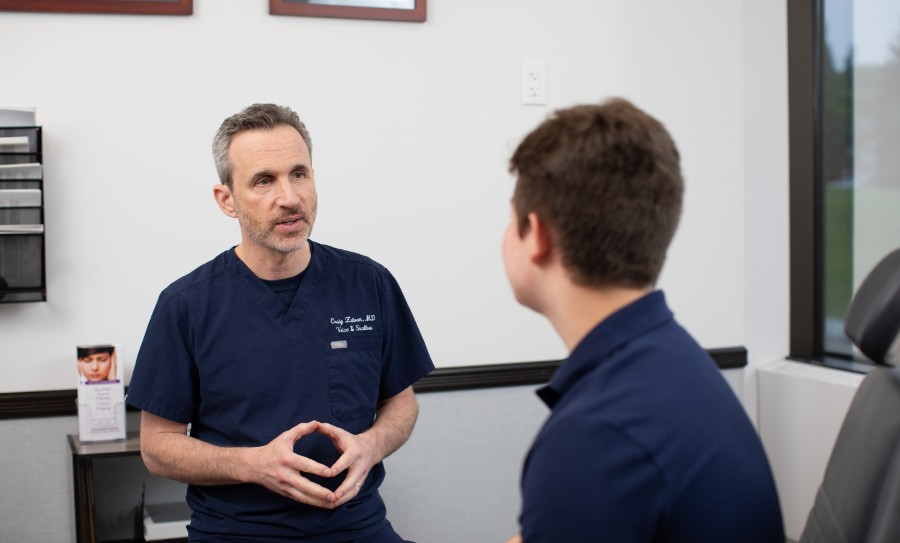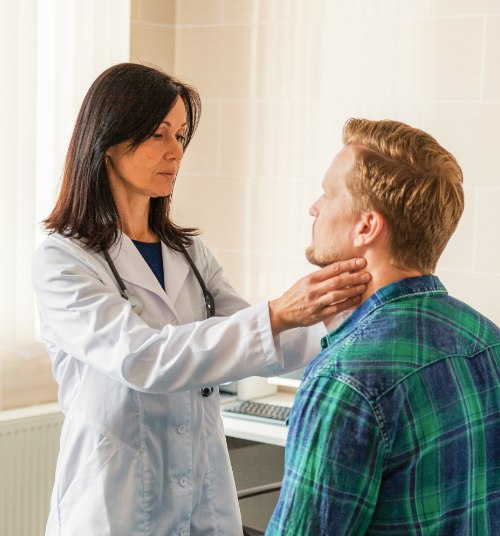
ENT & Allergy Associates, LLP is dedicated to the evaluation and treatment of voice and swallowing disorders and to further the understanding of voice and swallowing through education. The team at ENT & Allergy Associates has invented or pioneered a suite of office-based diagnosis and therapeutic procedures.
FEESST, pioneered by Jonathan Aviv MD, is the state-of-the-art non-radioactive alternative to modified barium swallow studies. This exam will allow for direct assessment of the motor and sensory aspects of the swallow in order to precisely guide the dietary and behavioral management of patients with swallowing problems to decrease the probability of aspiration pneumonia.
FEESST also allows evaluation of extra-esophageal manifestations of gastro-esophageal reflux including asthma, hoarseness, laryngitis, globus, and aspiration. FEESST is a two-part test. The first part of the test assesses sensation in the larynx in order to illicit an airway protective reflex. The second part of the test involves giving food to the patient (with green food coloring mixed in) and watching/ tracking where the food travels in the throat region.
Some of the benefits of FEESST include:
- Immediate results including dietary recommendations
- Outpatient, in-office procedure
- Non-radioactive alternative to modified barium swallow studies
- Portable capabilities
Who Is a Candidate?
Candidates for a FEESST examination include:
- Recent stroke patients experiencing difficulty swallowing, throat clearing, or choking during meals
- Patients with a history of swallowing difficulty related to an underlying
diagnosis of Parkinson's Disease, CP, Multiple Sclerosis, ALS or dementia - Patients with a history of upper respiratory infections, unexplained fevers, aspiration pneumonia, or asthma
- Patients who complain of trouble swallowing liquid, food or medications
- Patients receiving nutrition via G-tube or NGT with the possibility of improved function and ability to tolerate oral feedings
- Patients with a tracheotomy who might be able to tolerate oral feedings or a
diet upgrade - Patients who report a lump-like sensation in their throat or pain upon swallowing
- Patients with a history of reflux
FEESST has proven to be an instrumental and invaluable tool for both healthcare professionals and those suffering from vocal issues like asthma, laryngitis, and hoarseness. Not only does it help provide accurate assessments of a patient’s difficulties but also allows our physicians to develop a personalized course of treatment plans tailored to their diagnosis. It can even give patients better control over managing their symptoms over time without the need for invasive surgery. All in all, its benefits make it an unparalleled resource for anyone facing such disorders.
If you are suffering from any vocal difficulty do not hesitate to contact your local office to schedule your appointment today!

Patient Stories
-
"I recommend this place. Excellent staff. Fully prepared specialist. A place where you breathe peace."
- Johanna G. -
"Very professional, kind, and caring doctor. listens to you and how you feel, and also explains everything to you about what is going on. Would definitely recommend him to everyone I know."
- Michael P. -
"Very good experience. Highly recommend"
- Victor S.
Less Sick Days, More Living

